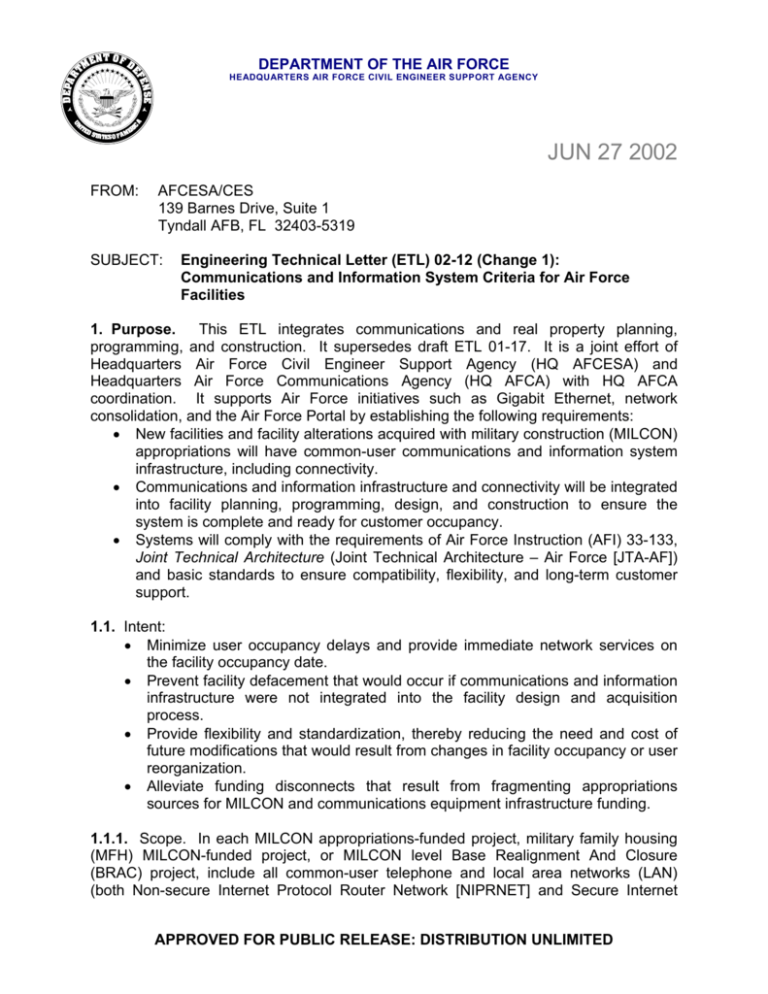About the Construction Process
Table Of Content

These may include documents that are beyond the scope of the IFS and are programmatic, procedural or highly technical in nature. Our members' research and guidance help inform local and state governments and develop federal programs to lesson the impacts of these disasters on our communities. To foster communication and knowledge-sharing among federal, industry and academic partners by leveraging WBDG-Whole Building Design Guide services to advance high-performing facilities. Questions, comments, suggestions and recommended changes for these documents are welcome and should be submitted as a Criteria Change Request (CCR). To submit a Criteria Change Request, click on the CCR link next to the document below. CCRs are not appropriate when they pertain to a specific project solicitation, request for proposal or after a project award.
The Integrated Design Approach
The WBDG’s Building Commissioning section presents information about current approaches and processes as well as overcoming challenges and emerging issues. It also has been expanded to address Existing Buildings and Ongoing Commissioning. The United States Army Corps of Engineers (HQUSACE), Naval Facilities Engineering Systems Command (NAVFAC), and the Air Force Civil Engineer Center (AFCEC) are responsible for administration of the UFC system. Points of contact and procedures for the development and maintenance UFC documents are prescribed in the latest edition of MIL-STD-3007. The National Institute of Building Sciences developed the WBDG-Whole Building Design Guide to foster communication and knowledge-sharing among federal, industry and academic partners to advance high-performing facilities. ESG is a growing movement that helps define and assess the impacts of businesses and companies on Environmental, Social, and Governance issues.
FEDERAL FACILITYCRITERIA UPDATES
WBDG is a gateway to up-to-date information on integrated 'whole building' design techniques and technologies. The goal of 'Whole Building' Design is to create a successful high-performance building by applying an integrated design and team approach to the project during the planning and programming phases. Each design objective may be significantly important or unique in any project, yet a truly successful one is where project goals are identified early on and held in proper balance during the design process.
The Integrated Team Process
Their interrelationships and interdependencies with all building systems are also understood, evaluated, appropriately applied, and coordinated concurrently from the planning and programming phase all the way through operations and maintenance. A high-performance building cannot be achieved unless the integrated design approach is employed. High-Performance Buildings are energy efficient, have limited environmental impact, operate with the lowest possible life-cycle costs, and have a positive effect on building occupants. There are a number of additional ways and tools to achieve high-performance buildings, such as through the implementation of a life-cycle cost analysis, integrated design processes, integrated energy solutions for the building envelope, and building commissioning. The "integrated design approach" asks all the members of the building stakeholder community, the technical planning, design, and construction team to look at the project objectives, building materials, systems, and assemblies from many different perspectives.
ESG has continued to grow exponentially as government, businesses, and consumers have become more conscious of the need to address how actions and operations affect society and the environment. Narrow the list by selecting a 'Division' option from the drop-down or view archived documents by selecting from the 'Status' drop-down and clicking 'Apply'. All NASA-specific UFGS sections (40) have been removed from the UFGS Master, though some UFGS sections may still include a NASA section reference.

The Energy Independence and Security Act (EISA) of 2007 further established a new and aggressive plan for achieving energy independence in our nation's building stock by the year 2030. The Act requires that federal buildings (new and renovations) achieve fossil fuel-generated energy consumption reductions on the order of 55 percent in the year 2010 to 100 percent by 2030. The Act also requires that sustainable design principles be applied to siting, design, and construction. The commissioning process is an emerging and growing industry where the entire commissioning team, including design, construction and operations, needs to communicate and understand their functions to maximize the results of the project. This understanding that commissioning is not an event but a process that extends from project start through design, construction and operation benefits all team members. The commissioning industry needs to provide information and training to enhance the process as it has done in this WBDG revision.
The publications and resources listed in this section are produced in accordance with the NIBS mission to serve the public interest by advancing building science and technology to improve the built environment. The recommendations found in many of these documents are often arrived at through a member consensus of broad-based building interests, serving on a NIBS council. The WBDG was created and continues to evolve as the only online portal providing built environment practitioners access to relevant building-related guidance, up-to-date federal criteria, new technology information, and workforce development training from a 'whole building' perspective. General Services Administration (GSA), the Department of State Bureau of Overseas Buildings Operations (OBO), and the Department of Homeland Security.
Ocean Energy
Questions or interpretations pertaining to these documents or situations should be referred to the Contracting Officer. That task is accomplished by the WBDG Resource Pages which are written by industry experts explaining strategies, technologies, applications, standards, and emerging issues relevant to the subject along with links to related WBDG pages, external websites, publications, and points of contact. Requests to deviate from any installation facilities standards, that are Unified Facilities Criteria (UFC) requirements, will follow the process outlined in the AFCFS for UFC waivers and exemptions. Established by the United States Congress, NIBS' mission is to serve the public interest by advancing building science and technology to improve the built environment. These members contribute their knowledge and experience to the WBDG and collaborate with industry organizations and subject matter experts to better serve the building community.
National Institute of Building Sciences Celebrates 50 Years of Service to the Nation - PR Newswire
National Institute of Building Sciences Celebrates 50 Years of Service to the Nation.
Posted: Tue, 30 Jan 2024 08:00:00 GMT [source]
This approach is a deviation from the typical planning and design process of relying on the expertise of specialists who work in their respective specialties somewhat isolated from each other and often in a linear manner. Private sector programs, including LEED®, Green Globes, the Living Building Challenge, and many other rating systems, define standards and measures for sustainable buildings and entire neighborhoods. Also, the Building Security Council's (BSC) Building Rating System and certification for professionals was created to help measure and benchmark security in buildings. The private sector and industry also responded by creating more products and systems that have multiple benefits. The knowledge, materials, and systems exist and are readily available to make a positive impact on the environment and on the quality of life of building occupants.
We bring together experts from throughout the building industry, design, architecture, construction, and government. In 1989, DoD adopted the Construction Criteria Base (CCB) information system as the official distribution method for facilities criteria. Over the years, the military services have been instrumental in the advancement of CCB and in 2003 adopted its evolution into the Whole Building Design Guide (WBDG). Previously, each service had its own publishing system resulting in criteria being disseminated in different formats.
The final NASA UFGS Master is available on the WBDG at NASA UFGS Master Specifications. Army Corps of Engineers (USACE), the Naval Facilities Engineering Systems Command (NAVFAC), and the Air Force Civil Engineer Center (HQ AFCEC). Refer to the Installation Development Plan (IDP) for facilities reuse opportunities and infill projects for infrastructure, sites and facilities.
The 'Whole Building Design' process draws from the knowledge pool of all the stakeholders across the life cycle of the project, from defining the need for a building, through planning, design, construction, building occupancy, and operations. Guides and Specifications augment the integrated design approach outlined by the WBDG. Guides offer a deep dive into building enclosure components—as well as calculator tools that aid the design and specification of mechanical insulation. Specifications serve the agencies that create them and offer valuable design advice for specific building types in the public and private sectors.
Comments
Post a Comment